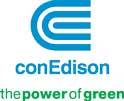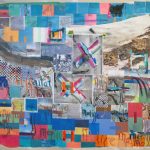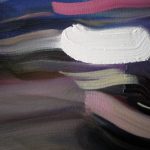IAP Interview: Monika Wührer, Artist and Director of Open Source Gallery
“All my projects are long term. I do not believe in quick fixes.”
Monika Wührer has built an extraordinary community in Brooklyn around Open Source Gallery, from her signature Soup Kitchen taking place every evening in December to poetry readings, international exhibitions, children’s workshops outdoors and in schools, and the Soap Box Derby. Known for her resourcefulness, Monika has turned challenging scenarios into positive outcomes such as her highly reviewed exhibition Associated curated after a devastating fire.
NYFA: Can you talk about your artwork and influences?
Monika Wührer: I studied with Michelangelo Pistoletto who led me on a path to socially engaged art. I find art an amazing tool to communicate, but it can be very frustrating to see that communication in the art world often ends up circling only among artists and other professionals related to this world. The part of society most artists are involved in or like to address are not really embraced or often feel even intimidated to be part of it. For example, for me, family and community are a very important factor. I try to create projects where I can make a small difference with my work, to involve more people organically in being part of the discussion of what art can and should do.
NYFA: Where do you place your work within the social engagement field?
MW: One example I like to use to explain this is my Seamstress Project, where factory workers who repeatedly sew the same pattern, are now in the museum, in charge of creating the entire room. They also created, thanks to the Museo Pecci, their own store. The only restriction was for them to use a particular textile that had imagery and text, that served as a catalog for the show. They loved it, and I think it really changed, at least for those 6 months, their lives.
Another project is Progetto Calcio, where I worked with professional soccer players to play tournaments with their fans and artists in various art galleries on foosball tables. There, the fans, usually in a very different position, were mostly winning, while the professional players, usually admired, were not really performing that well! I was also part of a show in the parliament in Austria with this project, where the former Austrian president played other politicians and stars in the Austrian soccer world on one of those original foosball tables.
NYFA: You have a clear focus on building a community. Does the gallery exist as a part of a bigger art project?
MW: All my projects are long term. I do not believe in quick fixes. I am trying not to make anybody feel like this is my art project, even if it kind of falls in line with all my personal socially engaged work. I really try to remove my name, mainly so that it all can grow organically. The only one project that we run where my name is very prominent is the cHURCH OF MONIKA, where I play with the idea of religion being a very free form of expression often misused and art being a substitute for generating a similar community. But also it is a statement of how ridiculous it is to feel this urge to be heard and seen. Regardless of all my attempts to give my projects their own life, I am also clearly involved in all and every part of their journey.
NYFA: Open Source programming focused this past year on art collectives from different parts of the world. What triggered this decision? Can you share some anecdotes?
MW: We had an extremely exciting year and I think we really managed to get our mission of what we believe art should and can do in our society across. For example, we had the Healing Art Initiative (HAI). After a turbulent last year, artists from HAI have reorganized under the name Being Neighborly, operating once a month out of Open Source Gallery. They are an amazing community of people who stick together. They are all facing mental health challenges and need each other’s support. We also had Boa Mistura, a Spanish art collective who painted murals inspired by Notorious BIG. They managed to grow our community and we had a huge amount of volunteers due to their attitude towards creating space.
Another group of artists was Rawiya, a female artist collective from the Middle East. They had an amazing presentation of projects and we managed to fly them all over to be part of a panel discussion. This was the first time in years that they were able to meet in person.
NYFA: How do you connect with new artists?
MW: One or two shows get selected via open calls. We create a committee of diverse artists and curators to select the artists. The other selections are chosen by a different committee. Here as well we really aim to have a diverse lineup of artists. All artists have to be present to interact with the immediate community. Our artists are from all over the world and we put a strong emphasis on them being here to interact.
NYFA: Can you give us a taste of what awaits for 2017?
MW: In 2017, we will explore culture through historical approaches, tradition, and social practice. Artists will involve our community in contemplation about the effects of political and social history on our contemporary circumstances. Through solo and curated group exhibitions featuring local, national and international artists, we will contemplate culture and traditional across generational and historical timescales. Exhibitions will include:
Liinu Grönlund (multimedia and film)
Francesco Simeti (sculpture and installation)
Sana Obaid (film and performance)
Andrew Snyder (sculpture and performance)
Omar López-Chahoud (curator)
Kimberly Mayhorn (film and installation)
We will also be expanding into an additional space in Gowanus where we will present our educational program and exhibitions in a storefront gallery space. We will continue to present exhibitions at our current space as well.
NYFA: What advice do you have for immigrant artists in the city?
MW: Come by Open Source. There is a great community here to help you out. Stop by the Soup Kitchen between 7:00 PM and 9:00 PM every night this December. Every situation is so different that I think the best is to find a supportive community. We have an amazingly active Board of Directors that has knowledge from labor laws to community organizing and applying for residencies.
Learn more about Open Source and sign up on their mailing list.
Monika Wührer is from Austria. After studying in Milan, Italy, Monika returned to her native country where she completed her Masters of the Arts in sculpture from the Academy of Fine Arts, Vienna. She moved to New York in 1999. Monika has 3 kids, Oskar, Hugo, and Peter.
This interview is part of the ConEdison Immigrant Artist Program Newsletter #88. Subscribe to this free monthly e-mail for artist’s features, opportunities and events here.
– Interview conducted by Alicia Ehni, Editor IAP Newsletter, Program Associate, NYFA Learning
Image: Monika Wührer, Wuzler (with Austria’s former president Heinz Fischer and former professional soccer player Herbert Prohaska), 2007, RUND, Exhibition in the parliament, Vienna, Austria






